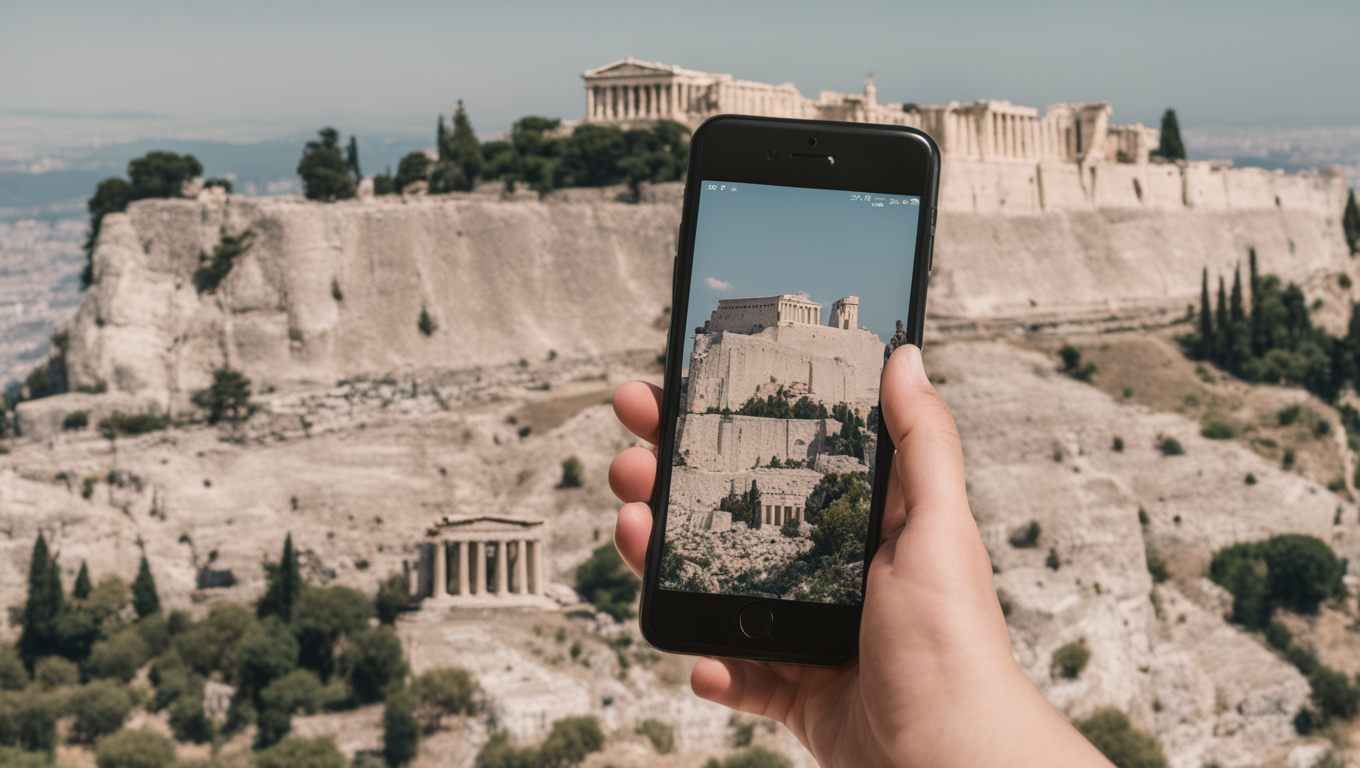Tourists visiting the Acropolis in Greece this holiday season are in for a treat. With the help of a new app developed by Greece’s Culture Ministry, visitors can now use their smartphones to explore the ancient site and see digital overlays of how it once looked. The app, called “Chronos,” uses augmented reality to show visitors the Parthenon temple with the marble sculptures that were removed more than 200 years ago and are now housed in the British Museum in London. This digital restoration provides a glimpse into what archaeologists believe the site looked like 2,500 years ago.
In addition to the sculptures, the app also reveals other lesser-known features of the Acropolis. Many of the sculptures were painted in vibrant colors, and a statue of the goddess Athena in the Parthenon stood over a shallow pool of water. The app allows visitors to experience these details, bringing the site to life in a way that traditional static signage cannot.
One visitor, Shriya Parsotam Chitnavis from London, was impressed by the app’s interactive features. “Seeing this has made it more interesting — seeing it in color,” she said. “I’m more of a visual person, so this being interactive really helped me appreciate it.” The app provides a more engaging and educational experience for visitors, especially those who may not be familiar with the history and significance of the Acropolis.
Beyond enhancing the visitor experience, the app has the potential to make Greek cities year-round destinations and boost tourism, which is vital to the Greek economy. Despite the challenges posed by the COVID-19 pandemic, Greece saw a 21.9% increase in inbound visitors from January through July compared to the previous year. The app can help alleviate overcrowding at the Acropolis by offering a virtual alternative for those who may not be able to navigate the uphill walk or endure long waits to see the monuments up close.
The development of the “Chronos” app is part of a broader trend in the tech industry. Augmented reality (AR) is finally reaching consumers after a long wait and is set to transform various industries, from medical surgery and military training to retail and live events. While companies like Meta and Apple are investing in high-end VR headsets, the widespread adoption of AR is still dependent on mobile devices due to their affordability and accessibility.
According to Maria Engberg, an associate professor of computer science and media technology, the integration of AR into travel services will create new and exciting customer experiences in the coming years. Museums and archives will digitize more content, allowing for overlaying of historical photos and videos. This not only enhances the visitor experience but also expands accessibility and knowledge sharing, both for real visitors and virtual visitors from around the world.
Greece’s Culture Ministry and national tourism authority have embraced technology as a means to promote their cultural heritage. In the past, they have partnered with companies like Microsoft for immersive digital tours and used video games like Assassin’s Creed Odyssey to attract younger travelers from China. The Chronos app is another step in the country’s efforts to make its ancient monuments more accessible and engaging to visitors.
As technology continues to advance and networks improve, the potential for mobile devices to deliver even higher-quality AR content is promising. The Chronos app, developed by Greek telecoms provider Cosmote, is just the beginning. The app’s designers hope to continue expanding its features and capabilities in the future.
Overall, the Chronos app offers a glimpse into the future of cultural heritage preservation and visitor experiences. By combining technology and archaeology, it provides a unique and interactive way to explore ancient sites like the Acropolis. Whether it’s bringing back lost sculptures or revealing forgotten details, this app brings the past to life in a way that is both educational and awe-inspiring.





Use the share button below if you liked it.